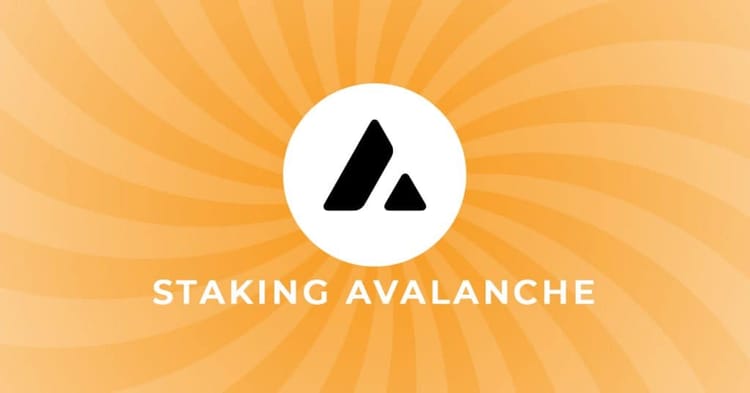Crypto Guide: 5 Popular Cryptos for Staking

Crypto staking is a popular way to earn passive income. It's the crypto industry's equivalent of passive income through interest or dividends. In staking, you'll earn while holding onto your underlying assets. However, like blockchain technology, staking comes with a few complex concepts, and not all cryptocurrencies are used. Read this blog if you're planning to earn in crypto through staking!
The best way to earn in the fast-growing crypto industry is to trade assets. This means buying an underlying asset at a low price and selling it at a higher price. If this is your only way to use cryptos, you're missing out on the potential benefits of staking. Crypto staking lets you earn interest or rewards by locking an underlying asset for some time. This process is similar to taking out a time deposit, locking your money for some time, and earning an interest. Crypto staking also uses the same principle: you stake a portion of your holdings on a specific platform and let it work on your behalf.
But first, what happens during staking and validation?
Staking is a key element in platforms that work using the "proof-of-stake" mechanism. In a proof-of-stake mechanism, a network of validators contribute or "stake" their cryptocurrencies in exchange for a chance to validate, update, or add new transactions on the blockchain and earn rewards in the process. In short, staking can only happen in blockchains using the PoS mechanism, such as Ethereum and Solana. Also, a specific number of coins must be staked in crypto staking before a participant can join the process.
In some platforms, failure to comply with the staking requirements or adding wrong transactions can result in "slashing, " meaning that the validator's pool gets penalized instead of getting the expected rewards.
Popular types of cryptos for staking
As mentioned, only cryptos that work on the proof-of-stake can be used for staking. Some popular crypto coins for staking are Ether, Solana, Cardano, Avalanche, and Tron.
According to Statista, the staking values for both Cardano and Solana account for roughly 70 percent of their total circulating supply, higher than Ethereum's. The difference in values is explained by how these cryptos are created.
Initially, Ethereum used a proof-of-work (PoW) mechanism similar to Bitcoin. This mechanism for validation is comparable to mining, where participants need lots of processing power to verify and add transactions to the blockchain. These miners get rewards in exchange for using computational power and completing tasks.
As mining becomes more resource-intensive and with the growing popularity of decentralized finance or DeFi protocols, another consensus mechanism was introduced- the Proof-of-Stake (PoS). In this new protocol, participants or "validators" commit or "stake" their coins to earn an opportunity to verify or add transactions to the blockchain.
After successfully completing the task, the participant earns a reward, essentially an interest on the investment. Since most blockchains have a minimum staking amount, the so-called "staking pools" are becoming more popular.
In a staking pool, groups of people contribute tokens and delegate the authority to validate transactions to a validator or groups of validators.

So, what are the top cryptocurrencies used for staking?
Ethereum
In the Ethereum blockchain, staking is the act of depositing 32 ETH to activate validator software. As the blockchain's validator, your task includes storing data, processing information, and adding new blocks. There are at least four options on how to stake your Ether: solo staking, staking as a service, pooled staking, and centralized exchanges.
The most popular and recommended option is through solo staking. By signing up with this option, you'll need to stake at least 32 ETH and be backed by a working PC connected to the internet 24/7. Also, it's advantageous for interested individuals to have the technical know-how to staking on the Ethereum blockchain. Since the requirements aren't that accessible to many, most interested participants consider other options, such as pooled staking.
Solana
Solana is one of the top cryptos for staking. In staking with Solana, you're assigning some or all of your SOL tokens to a validator or validator, which helps increase the validator's voting weight. The community calls it "delegating" your tokens. By delegating, you're just assigning the authority to participate and don't give ownership of the tokens.
To stake your Solana tokens, you'll need a wallet that allows staking. Then, the SOL tokens in the wallet must be transferred to a stake account. Your stake account will have a unique address, and a single walletcan authorize different stake accounts. In the Solana blockchain, the yield for your staked tokens depend on the inflation rate, number of SOL tokens staked on the network, the validator's uptime, and the commission fee.
Cardano
The Cardano network also supports staking. There are two ways on how you can earn rewards while holding your ADA. First, you can delegate your tokens to a stake pool. And second, you can run your own stake pool. The amount of tokens you delegate to the pool is the primary factor used by the Ouroboros protocol to decide who will add the next block to the network, and get the reward in the process. In short, the more tokens you delegate to the pool, the more likely it is to add the next block, and earn the corresponding reward.
Earned rewards are added to your original stake.So, if you don't pull out your tokens, your staked amount increases, boosting your next reward.
Tron
Tron is another proof-of-stake (PoS) platform that allows staking of its tokens. Unlike other popular blockchains, it's a growing smart contracts platform focused on becoming a developer-friendly ecosystem for decentralized applications or Dapps.
According to its website, there are two ways why TRX tokens are staked. First, staking will prevent malicious spam transactions from clogging its network, whih cna use delays in confiming transactions. And second, this mechanism can stop malicious voting. If you decide to stake your TRX, you will get a proportionate amount of TP and bandwith. The TP is your voting power, and the bandwith points are used to pay for platform transactions. Once the amount has been staked, it's locked and cannot be used for trading. According to the Tron website, there's a fixed three day stake duration, after which, you can unstake your balance any time.
Avalanche
At Avalanche, AVAX holders can also participate in staking and earn rewards as a validator. A validator is someone who is verifies transactions on the blockchain. In a proof-of-stake (PoS) platform like Avalanche, blockchain validators cna earn rewards for staking their tokens, and by correctly participating in the network's decisions. Like in other blockchains, your staked tokens and participation can help secure the network and ensure transparency. Avalanche offers one biggest rewards in the business, with an APY of up to 7.65%.
There are two other reasons why staking in Avalanche is attractive for traders and investors. First, there's no slashing in Avalanche unlike other platforms. As long as you meet the platform's parameters, you'll get the rewards. Second, staking at Avalanche boasts low hardware requirements.



